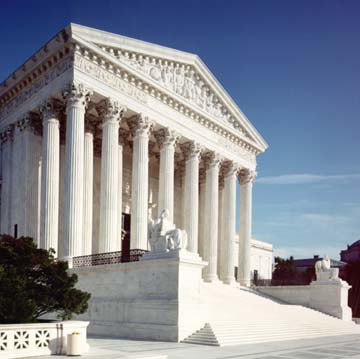|
| |
 | |
|
U.S.
Government > The Judicial Branch Introduction | The Constitution | The Executive Branch The Legislative Branch | The Judicial Branch | State Government | Local Government Political Parties | Elections | The Nation's Capital | The Flag | The National Anthem The Great Seal | The Pledge of Allegiance | |
The judicial branch is headed by the U.S. Supreme Court, which is the only court specifically created by the Constitution. In addition, Congress has established 13 federal courts of appeals and 95 federal district courts. The president has the authority to appoint federal judges as vacancies occur, including justices of the Supreme Court. The Supreme Court meets in Washington, D.C., and the other federal courts are located in cities throughout the United States. The Supreme Court consists of the Chief Justice of the United States and such number See also: |
|
| Texts are abridged from U.S. State Department IIP publications and
other U.S. government materials. |
|
| What kind of information
materials are available?
CD: These documents are available in fulltext format on the About the USA CD-ROM. Teachers: Request a copy for classroom use. L: Selected documents are available in German as well as other languages, including Arabic, Chinese, French, Spanish, Persian and Turkish. |
| DISCLAIMER Any reference obtained from this server to a specific commercial product, process, or service does not constitute or imply an endorsement by the United States Government of the product, process, or service, or its producer or provider. The views and opinions expressed in any referenced document do not necessarily state or reflect those of the United States Government. |
 U.S. Diplomatic Mission to Germany /Public Affairs/ Information Resource Centers Updated: January 26, 2009 |
